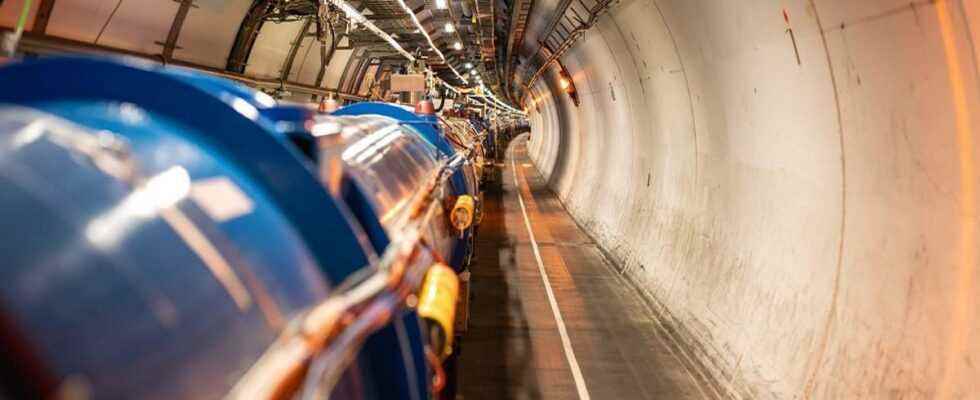The world’s largest particle accelerator, the Large Hadron Collider (LHC), is back in operation after a three-year hiatus for maintenance work and an upgrade with more energy, higher beams intensity and greater precision.
The LHC, located at CERN near Geneva, is back in action and this time it is ready to operate 24/7 for nearly four years at a record energy of 13.6 trillions of electron volts. The improvements made should allow the LHC tools to be more precise and achieve more particle collisions, to obtain more intense light and to discover new particles within the framework of quantum field theory.
CERN used the LHC to discover the Higgs boson on July 4, 2012, before its first extended shutdown. At the time, as part of the LHC’s “Run 1”, the machine was operating at 3.5 trillion electron volts (TeVs). The second phase took place between 2015 and 2018, with proton beams colliding at 13 TeV before the second extended shutdown. It is now time for Run 3 at 13.6 TeVs or 6.8 TeV per beam.
Objective: 180 billion particles per packet in 2023
Rende Steerenberg, head of the operations group in the LHC’s beam department, said that with 6.8 TeV for the third cycle, the LHC wants to reach “140 billion particles per bunch or per beam”. From 2023, he wants to increase this figure to 180 billion particles per packet. “That will of course give us many, many more collisions in the experiments.”
An electronvolt is a measure of the kinetic energy gained by an electron accelerating from rest. Hence the need for an accelerator like the LHC with its 27 km circumference, which accelerates hadronic particles (such as lead, xenon and oxygen ions at different levels of the mass spectrum) so as to form two beams traveling in opposite directions, almost at the speed of light. The beams collide in the machine at four points or “detectors” called ATLAS, CMS, ALICE and LGCb, each of which focuses on measuring different types of hadronic particles.
It is the Higgs boson particle (or wave in quantum field theory) that is believed to give mass to the particles that form the basis of stars, planets and everything else. When two electrons interact, for example, they exchange light particles or photons which are the “force carriers” of an electromagnetic interaction, explains CERN.
The modernized LHC will be able to create “stable beams”, a condition for scientists to turn on all their subsystems for experiments and start taking data.
In search of dark matter
“We will concentrate the proton beams at the interaction points to a size of less than 10 microns, in order to increase the collision rate”, explains Mike Lamont, director of accelerators and technology at CERN. “Compared to Run 1, during which the Higgs boson was discovered with 12 inverted femtobarns, we will now, in Run 3, deliver 280 inverted femtobarns. This is a significant increase, which opens the way to new discoveries. »
CERN expects the ATLAS and CMS detectors to record more collisions in the third cycle than in the previous two cycles combined.
The LHCb experiment has undergone a complete overhaul and is expected to increase its data collection rate tenfold, while ALICE aims to increase the number of collisions recorded fiftyfold.
Scientists hope to answer questions about the origin of matter-antimatter asymmetry in the universe and search for dark matter candidates.
“We are eagerly awaiting measurements of the decay of the Higgs boson into second-generation particles such as muons. This would be an entirely new result in the Higgs boson saga, confirming for the first time that second-generation particles also acquire mass through the Higgs mechanism,” said CERN theorist Michelangelo Mangano. in a press release.
Source: ZDNet.com
